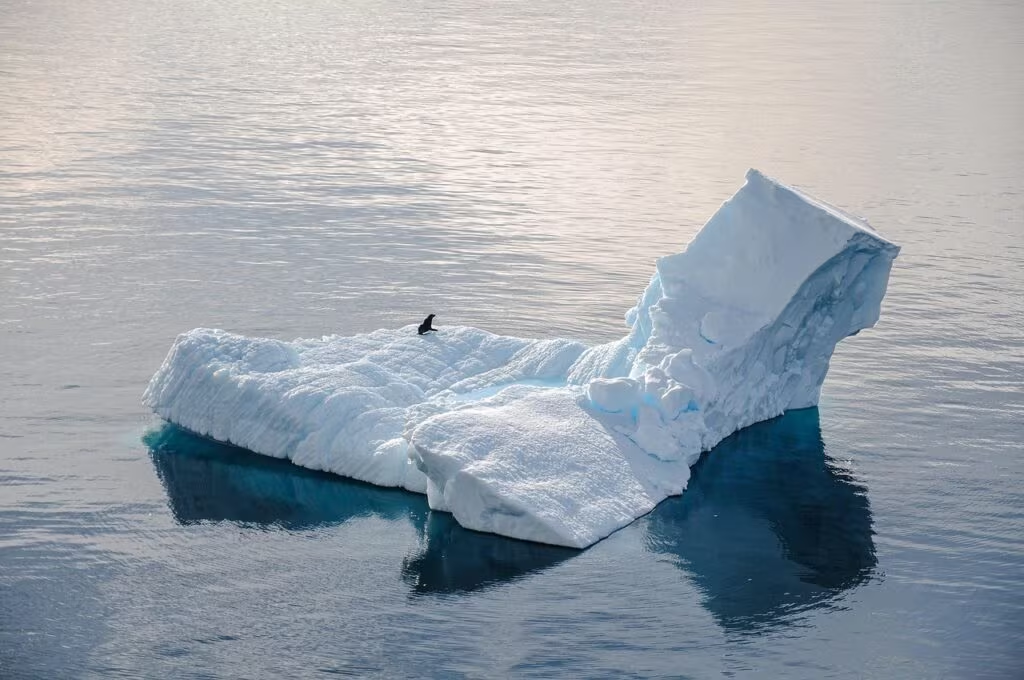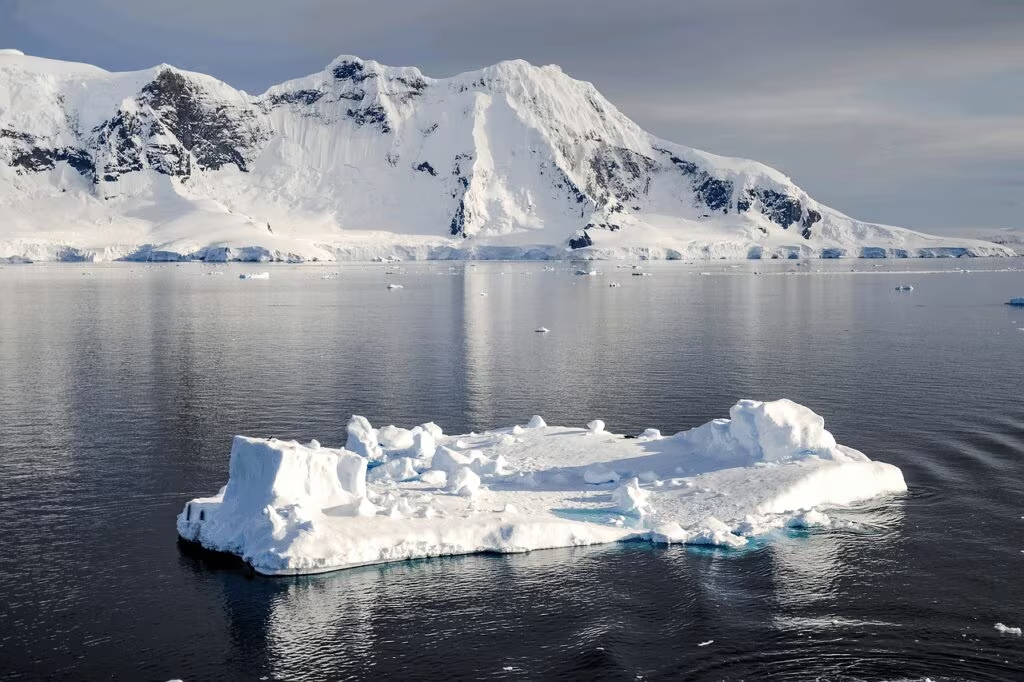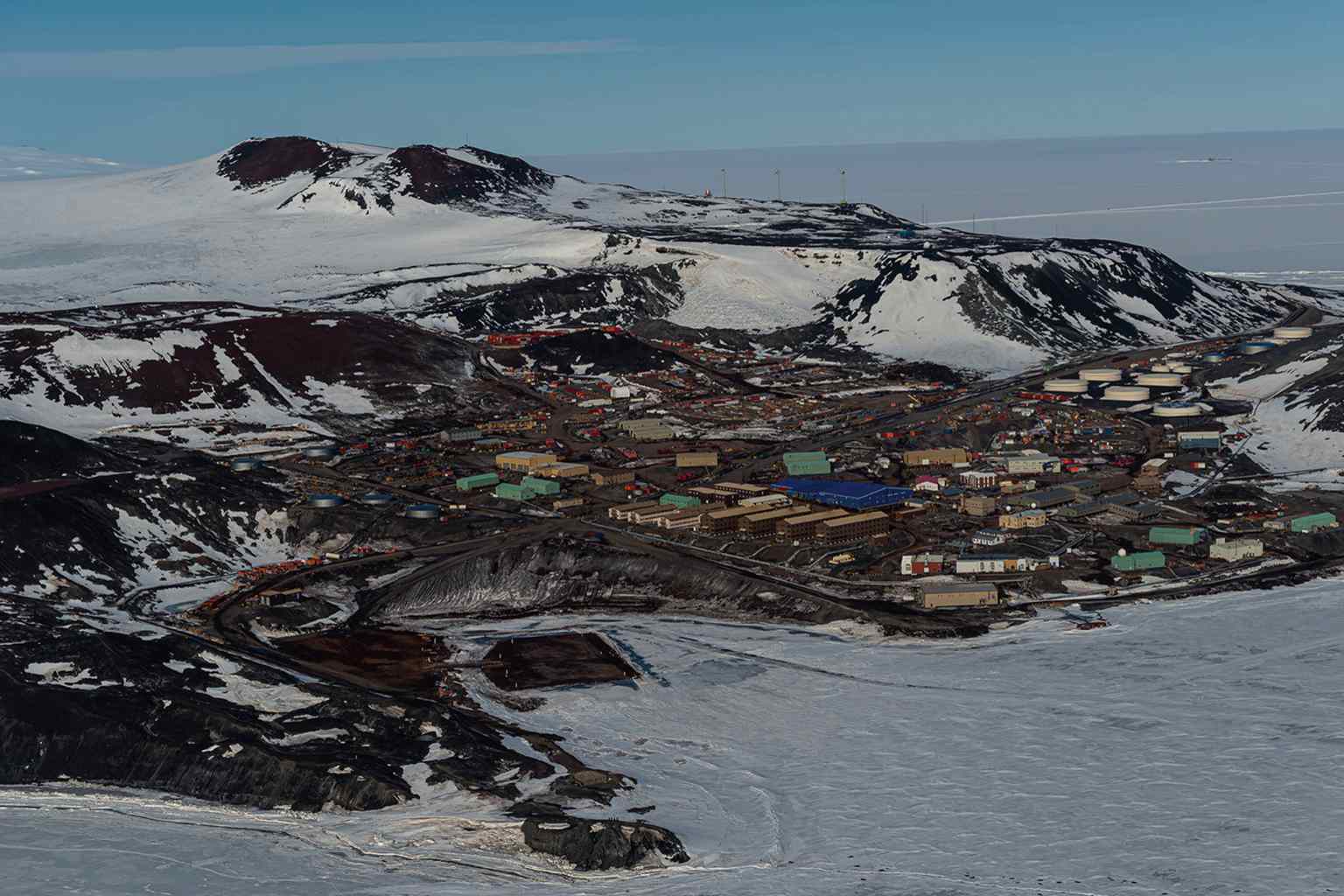Mapping a World Frozen in Time: The Discovery Under Antarctica
For 34 million years, a vast, complex landscape of river valleys, hills, and deep fjords has been perfectly preserved beneath the colossal weight of the East Antarctic Ice Sheet (EAIS). Scientists, utilizing advanced satellite technology, have recently peeled back the ice to reveal this ancient, temperate world, offering an unprecedented look at Antarctica before it became the frozen continent we know today.
This isn’t a discovery made by drilling; rather, it is a triumph of remote sensing. Researchers combined multiple datasets—primarily satellite altimetry and radar sounding—to map the bedrock topography beneath the ice. The results show a sprawling, low-relief terrain stretching across an area larger than Belgium, providing critical clues about the processes that initiated and sustained the world’s largest ice mass.

The Technology: Seeing Through 1.2 Miles of Ice
The challenge of mapping the Antarctic bedrock is immense. The EAIS averages over 1.8 miles (3 kilometers) thick in many places, and the newly revealed landscape lies beneath nearly 1.2 miles (2 kilometers) of ice. To overcome this, the scientific team relied on sophisticated techniques pioneered over decades of polar research.
Remote Sensing Techniques Used:
- Satellite Altimetry: Satellites measure the height of the ice surface. By combining this with gravity data, researchers can infer the shape of the landmass underneath.
- Ice-Penetrating Radar (Radar Sounding): Aircraft fly over the ice, emitting radio waves that penetrate the ice and bounce off the bedrock. The time it takes for the echo to return provides precise measurements of ice thickness and the underlying topography.
- Gravity and Magnetic Surveys: Variations in the Earth’s gravitational and magnetic fields can indicate differences in the density and composition of the buried rock, helping to distinguish between ancient sedimentary basins and hard crystalline rock.
By integrating these high-resolution datasets, scientists were able to reconstruct the paleogeography—the ancient geography—of the region with remarkable detail. The resulting map shows a terrain carved by rivers and glaciers long before the permanent ice sheet formed.
A Temperate Past: What the Landscape Reveals
The preserved landscape dates back to the Eocene Epoch, specifically just before the Eocene-Oligocene Transition (EOT), which occurred approximately 34 million years ago. This period marks one of the most dramatic climate shifts in Earth’s history, transitioning the planet from a warm, “greenhouse” state to a cooler, “icehouse” state.
Before the EOT, Antarctica was not a frozen wasteland. Evidence suggests the continent was covered in temperate rainforests, supporting diverse flora and fauna. The newly mapped terrain confirms this picture, revealing features characteristic of a wet, non-glacial environment:
- Deep River Valleys: Evidence of major fluvial systems that once drained the continent.
- Rolling Hills and Lowlands: A topography suggesting slow erosion by water, not rapid scouring by massive glaciers.
- Ancient Fjords: Large, U-shaped valleys near the coast, indicating that early, smaller glaciers carved channels that were later submerged by rising sea levels and then buried by the expanding ice sheet.

The Eocene-Oligocene Transition
The EOT was the pivotal moment when the EAIS began its formation. Global cooling, driven by falling atmospheric carbon dioxide levels, allowed ice to accumulate rapidly. The fact that this ancient landscape was preserved, rather than destroyed, suggests that the ice sheet formed rapidly and gently over the existing terrain, effectively freezing it in place.
“The preservation of this landscape suggests that the initial glaciation of East Antarctica was a relatively non-erosive process,” explained one of the lead researchers. “The ice sheet grew quickly, encapsulating the terrain rather than grinding it down, much like pouring concrete over a detailed model.”
This finding challenges some previous theories that suggested the initial ice sheets were highly dynamic and destructive to the underlying bedrock.
Implications for Modern Climate Science
The discovery holds profound implications for understanding the stability of the EAIS today, particularly in the context of accelerating climate change. The EAIS contains enough frozen water to raise global sea levels by approximately 52 meters (170 feet). Its stability is crucial for the future of coastal regions worldwide.
By understanding the conditions under which the EAIS first formed and stabilized, scientists can create more accurate models to predict how it might destabilize in a warming world.
Key Climate Insights:
- Ice Sheet Initiation: The landscape provides a baseline for modeling the initial growth of the ice sheet 34 million years ago, linking topography directly to ice flow dynamics.
- Basal Lubrication: The presence of deep valleys and potential sedimentary basins beneath the ice could influence the flow of modern ice streams. Water trapped in these low points can act as a lubricant, accelerating the movement of ice toward the ocean.
- Vulnerability to Warming: If the ancient terrain is prone to trapping meltwater, it suggests that rising ocean temperatures could penetrate deeper inland, potentially destabilizing the ice sheet from below.

This research underscores the critical link between Earth’s deep past and its immediate future. The topography that shaped the initial growth of the EAIS millions of years ago may now dictate its rate of collapse in the 21st century.
Key Takeaways
This remarkable discovery provides a unique window into Earth’s paleogeography and holds significant value for contemporary climate modeling:
- Age and Location: A 34-million-year-old landscape, including river valleys and hills, was found preserved beneath nearly 1.2 miles of the East Antarctic Ice Sheet (EAIS).
- Method: The discovery was made using advanced satellite altimetry and ice-penetrating radar to map the bedrock.
- Ancient Climate: The terrain confirms that Antarctica was a temperate continent with extensive fluvial systems just before the global cooling event known as the Eocene-Oligocene Transition.
- Ice Sheet Formation: The landscape’s preservation suggests the EAIS formed rapidly and non-erosively, freezing the terrain in place.
- Modern Relevance: The topography of the buried landscape is crucial for improving climate models, as valleys and basins can influence the flow of modern ice streams and the potential for basal melting and ice sheet collapse.
Future Research Directions
Future research will focus on integrating these topographical maps with geological data obtained from ice cores and limited drilling projects. The goal is to identify areas where the ancient sedimentary basins might contain preserved organic material—perhaps even fossils—that could provide direct evidence of the life that thrived in Antarctica before the great freeze. Furthermore, mapping the precise location of these buried valleys will help scientists monitor potential weak points in the EAIS where meltwater could accelerate ice loss, providing essential data for global sea-level projections.
Original author: Rivo Raphaël Chreçant
Originally published: November 9, 2025
Editorial note: Our team reviewed and enhanced this coverage with AI-assisted tools and human editing to add helpful context while preserving verified facts and quotations from the original source.
We encourage you to consult the publisher above for the complete report and to reach out if you spot inaccuracies or compliance concerns.

